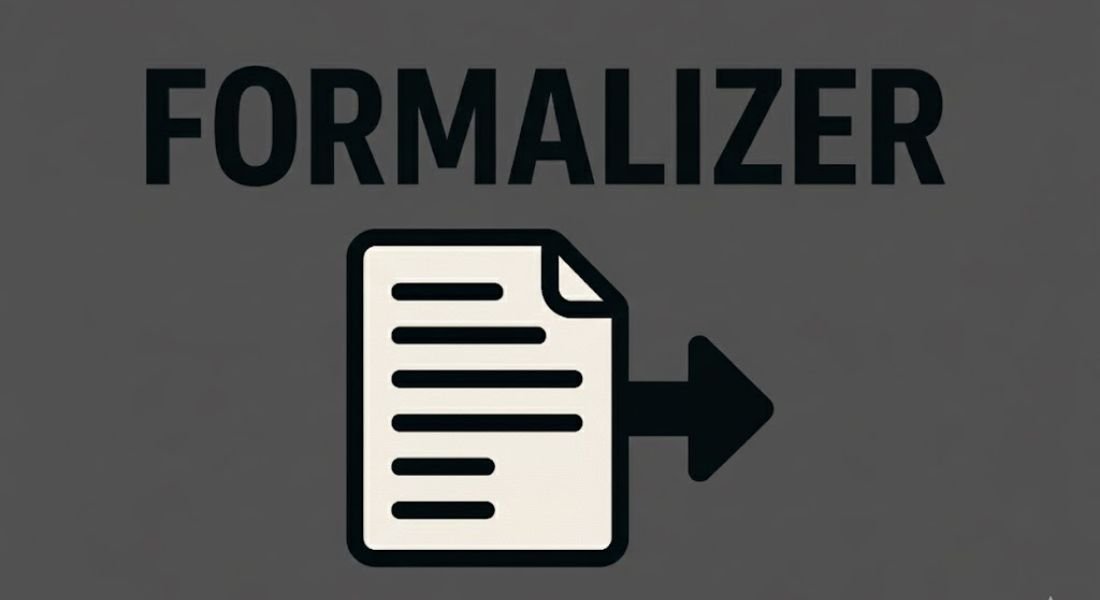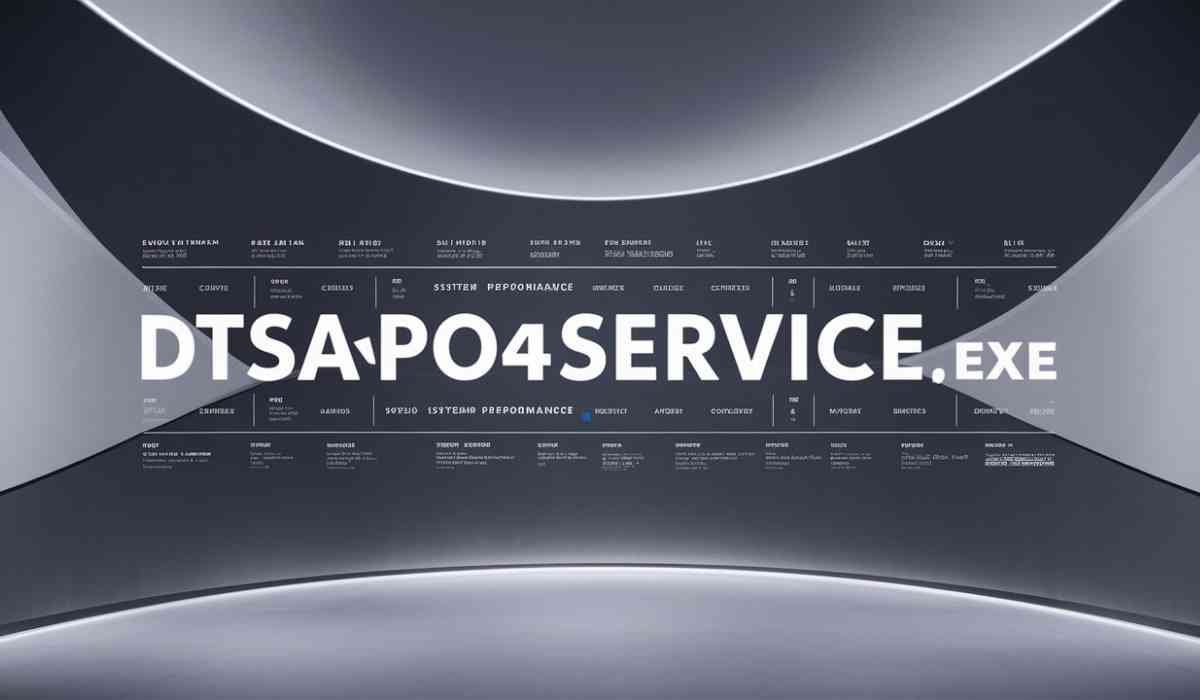The modern world is driven by complex systems and processes that require absolute accuracy and clarity. Ambiguity is the enemy of efficiency and success especially in technical fields. This is where the formalizer tool emerges as a critical solution a system designed to transform vague or informal ideas into perfectly structured unambiguous formats.
In this article we discuss what Formalizer is and why it matters practical strategies to use it and the best ways to improve your writing. By the end you will know how to transform everyday casual text into structured professional content that fits business, academic and personal communication needs.
Understanding Formalizer: Definition and Basics

A Formalizer is a tool or mechanism designed to convert informal or casual input into a structured formal output. It follows simple rules to make sure the meaning is accurate and easy to understand. This helps avoid confusion and makes your message look polished.
While the concept is important in technical fields like software or legal work it is also useful for everyday writing such as emails, reports or academic papers.
Some tools even let you choose the tone like business, academic or professional so your text fits the audience. In short it helps you express ideas clearly and confidently without changing their meaning.
Why the Formalizer is Essential for Technical Integrity
The importance of this formal tool cannot be overstated in technical projects that demand high reliability. It serves as the guardian of correctness from the very beginning of a project lifecycle.
By demanding that all inputs adhere to a formal system the tool compels designers and engineers to think through every detail and contingency upfront. This preemptive identification of inconsistencies is a massive cost-saver preventing expensive fixes later in development.
Formalizer Applications in Software Development and Design
In software engineering the formalizer is an invaluable aid for generating formal specifications from initial requirements. Instead of relying on lengthy and often vague natural language documents the tool translates these into mathematical or logical statements.
This transformation allows for the use of formal methods which include techniques for mathematically verifying system properties. Formal verification proves that a design meets its specification a task impossible without the structural output provided by the tool.
How to Use a Formalizer: Step-by-Step Guide
Using this formalized tool can make your casual writing clear professional and easy to understand. By following a simple step-by-step approach anyone can improve the tone, structure and readability of their text.
Step 1: Choose the Right Tool
Selecting the correct formal tool is the first and most important step. Some tools are designed mainly for adjusting tone while others focus on rewriting casual text into formal writing. Choosing a tool that aligns with your purpose ensures accurate and useful results.
Step 2: Input Your Text
Next provide the text you want to refine. This could be a paragraph from an email, a report draft or a section of an article. Pasting or typing the content into the tool gives it the material needed to generate a polished formal version.
Step 3: Select Tone and Style
After adding your text pick a tone that fits your audience and context. Academic writing often requires a highly formal tone while business emails may need a moderate level of formality. The correct tone ensures your writing is appropriate and professional.
Step 4: Generate the Formal Text
Click the convert or rewrite option in the tool. The formalizer will produce a refined version of your content enhancing vocabulary, sentence structure, and overall readability.
Step 5: Review and Adjust
Carefully review the output to ensure it flows naturally. Some sentences may feel stiff or slightly unclear so making small edits will keep the text readable while preserving your intended meaning.
Utilizing the Formalizer for Data Standardization and Consistency

Beyond technical specifications the formalized tool plays a vital role in data standardization. Organizations often deal with vast amounts of heterogeneous data from various sources.
A tool can be implemented to impose a consistent schema format and validation rule set across all incoming data streams. This consistency is essential for accurate data analysis reporting and machine learning applications ensuring that the input data is reliable.
The Role of the Formalizer in Logical and Mathematical Proofs
In pure mathematics and logic the act of formalization is central to ensuring the absolute correctness of theorems. A formal tool here is the strict framework that governs the steps of a proof. Every inference rule must be explicitly stated and followed ensuring there are no intuitive leaps or hidden assumptions.
This rigorous approach makes proofs generated through this undeniable and allows them to be checked by automated proof checkers ensuring logical correctness and soundness.
Limitations of Formalizer Tools
- Outputs may sometimes feel rigid or unnatural.
- Subtle nuances may be lost in highly creative or technical writing.
- Relying entirely on the tool can reduce personal voice.
- Large text blocks are better processed in smaller sections for better accuracy.
Some formal tools require subscriptions for full features.
Benefits of the Formalizer Tool
The main value you get from the formalizer is its power to seriously reduce confusion or ambiguity. When things are unclear it causes mistakes extra work or rework and often means you miss important deadlines. It tackles this by changing everyday or casual language into a very exact and precise formal system.
This ensures that every person working on the project shares the same crystal-clear understanding or unambiguous blueprint. Having this single clear definition minimizes communication problems and greatly raises the chances of the project succeeding because everything is done with high precision.
Comparing the Formalizer with Traditional Descriptive Methods
Traditional descriptive methods rely heavily on human expertise and subjective interpretation of documents often leading to miscommunication. The formalized tool provides an objective mechanism for verification.
While traditional methods are quick for initial sketching the formalizer provides the necessary depth and certainty required for implementation. It shifts the focus from “what we think it means” to “what the formal specification explicitly states” a huge leap in quality control.
Tips for Maximum Efficiency

- Use it as a guide, not a replacement for your writing skills.
- Break long text into smaller sections for better results.
- Combine with grammar and spell checks for fully polished output.
- Experiment with different tone settings to see what works best.
- Use it regularly to improve your understanding of formal writing styles.
Conclusion
The formalizer stands out as a fundamental tool for anyone aiming for excellence and reliability in their work. We have seen that its core strength lies in its ability to transform uncertain informal inputs into a clear formal specification. This process dramatically reduces confusion minimizes errors and ensures that all technical and logical systems are built on a rock-solid foundation of unambiguous clarity.
By adopting the formalizer and its principles you are not just simplifying your workflow you are committing to a higher standard of technical integrity and precision that ultimately drives better project outcomes and guarantees long-term success.
FAQs
How does the formalizer improve software quality?
The formalizer improves software quality by allowing developers to use formal methods and formal verification techniques on the system specifications catching fundamental design errors early when they are least expensive to fix.
What is the primary function of a formalizer?
The primary function of this tool is to convert informal descriptions or messy data into a precisely structured blueprint or a strictly defined arrangement.
Can a formalizer work with multiple languages?
Some formalizer tools support multiple languages allowing you to convert casual text into formal writing in English, Spanish, French and more. Check the tool’s language options before use.
Are there free alternatives to paid formalizer tools?
Yes some tools offer free versions with limited features. Paid versions usually provide more tone options longer text limits and advanced features.
Can I integrate the formal tool with word processors?
Some formalized tools offer extensions or plugins for Word, Google Docs and other editors making it easier to formalize text while writing.









